Back to help and advice menu
5 types of footing that make your home susceptible to sinking
When builders construct a home, the very first thing they lay in the ground is the footing. The footing is meant to support your home’s load, stop it from sinking into the ground and maintain structural integrity.
But however great your home’s footing is, it’s still susceptible to sinking.
The nature of the environment and foundation upon which your home’s footing sits is a major factor. And at the end of the day, it may be the very nature of your footing itself that makes your home susceptible to sinking.
Here are the 5 main types of footing susceptible to sinking in Australia.
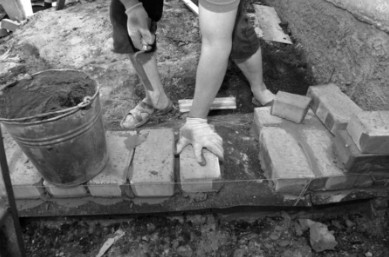
Strip Footings
Strip footings are the most common type of footing found in residential homes in Australia. Used a lot back in the 1930s and onwards, strip footings have traditionally been laid in trenches excavated by hand under the supervision of bricklayers or stone masons.
Very often, strip footings were made of clay pressed brick or stone block, bonded with lime mortar. In many cases, footing depths were only 450mm. Due to their close proximity to the surface, strip footings are particularly susceptible to sinking.
The expansion and contraction of reactive clays and soil erosion caused by leaking pipes and poor storm water drainage are just some of the environmental factors that cause strip footings to sink.
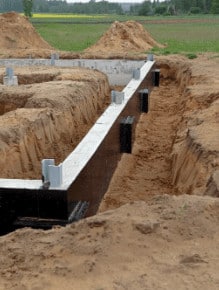
Deep Strip Footings
A step up from the old strip footings, Deep Strip Footings were laid with machine excavators and concrete. Newer technologies allowed builders to excavate deeper into the ground, lowering the risk of foundational failure. Especially if the ground was found to be made of highly reactive clays or soggy.
Deep strip footing was an expensive solution and never caught on like the original strip footings. Deep strip footings would fail and sink mostly from oversaturation of the ground due to leaking pipes and poor storm water drainage. Poor compaction of the ground was another cause.
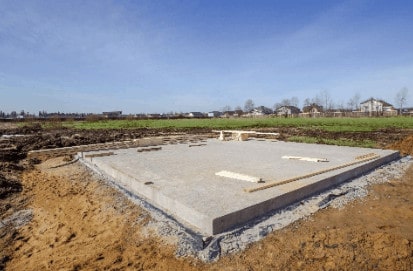
Raft Footings
Raft footings appear as the name suggests — a raft but upside down. When constructed correctly, raft footings are an optimal footing type. They form all sides of the building and floor as one piece without breaks, for extra strength and durability.
Despite their optimal design, raft footings are still susceptible to sinking. If builders haven’t prepared the ground by compacting the soil enough, raft footings can sink. Reactive clay that expands and contracts in different weather conditions can cause raft footings to fail too.
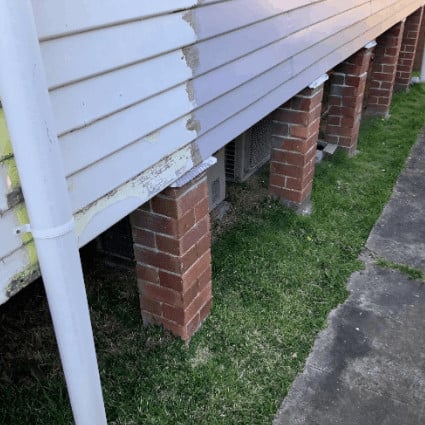
Pad Footings
Pad footings are often used for shallow foundations. If your structure happens to have a lot of columns or pillars, the pad footings will carry and spread these concentrated loads.
Pad footings are constructed by digging holes into the ground, fitting them with reinforced cages and filling the holes with concrete up to ground level. Pad footings are isolated, meaning there isn’t any connection between them.
Poor design of the pad footings, poor ground preparation, oversaturation of the ground or loss of moisture from the ground can cause pad footings to fail.
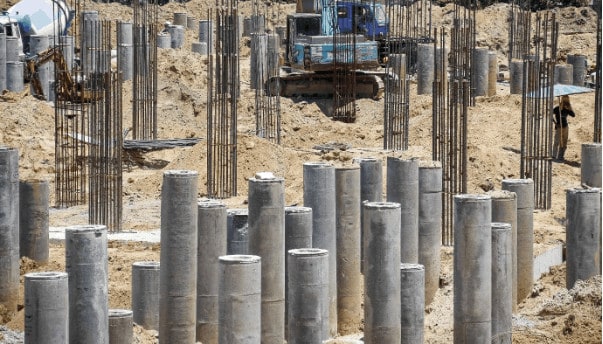
Load Bearing Pile Footings
Load bearing pile footings are usually reserved for high rise buildings or large infrastructure such as bridges. But if a home is being built in a tricky area such as the side of a hill or in a known flood zones, load bearing pile footings will come into play.
When constructed to standard, load bearing pile footings can stand for a millennia. Almost always designed by structural engineers, load bearing pile footings go down into the ground until a solid base can be found. This solid base can be bedrock.
One of the most famous buildings built on load bearing pile footings is the Burj Al Arab in Dubai, which sits on a sandy sea bed.
The only reason load bearing pile footings might fail, is because of poor design which exposes them to water damage.
If you suspect your home is sinking and want the footings double checked, we would be happy to offer our expert advice.
Just give us a call on 1300 854 115 or book a FREE inspection today.


























